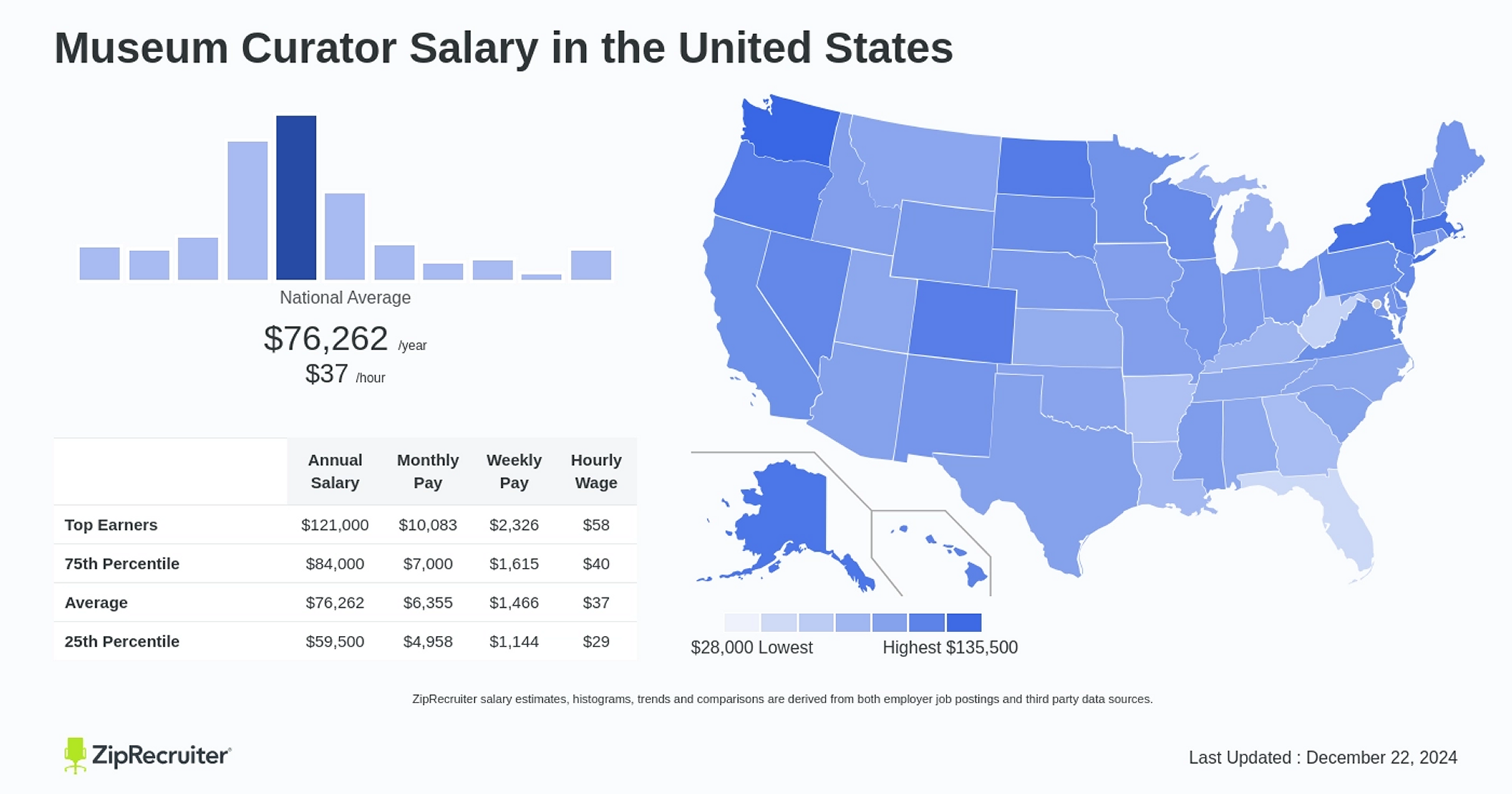Career Opportunities
Museum Curator
Museum Curators and Exhibit Designers are responsible for developing, curating, and managing exhibits. Museums and cultural centers in play a pivotal role in preserving and interpreting the stories, artifacts, and histories of communities. As a curator, your role would not only involve the care and organization of collections but also the design of exhibits that educate the public about unique cultural, historical, and ecological aspects of a region. This is a career that combines historical research, cultural sensitivity, and creative design to engage visitors and foster a deeper understanding of artifacts and traditions.
Role
The day-to-day work of a Museum Curator or Exhibit Designer blends historical research with creative design, project management, and public engagement. Whether working for a local history museum, a cultural heritage site, or a specialized exhibit, the tasks are often both intellectually stimulating and practically challenging.
Key Responsibilities
Research and Acquisition: One of the primary responsibilities of a Museum Curator is to conduct in-depth research to understand the significance of artifacts, artwork, and historical documents. This might involve traveling to local communities, interviewing experts, or working with academic institutions to gather information about history, culture, and traditions. This research also informs decisions about which items to acquire for the museum’s collection, whether through donations, acquisitions, or loans from other institutions.
Curating and Organizing Exhibits: The heart of a Museum Curator’s work is curating exhibits. This includes selecting
the artifacts, organizing them in a coherent narrative, and determining the best way
to display them to tell the story you want to convey. When curating an exhibit the
curator would select objects, photographs, personal stories, and documents that highlight
the social, economic, and environmental impact of the focus of the exhibit. This process
requires an understanding of both the subject matter and the most effective ways to
communicate that knowledge to the public. The role also requires the ability to design
exhibits that are engaging, educational, and visually compelling.
Exhibit Design and Layout: This woek is also focused on the layout and presentation of exhibits, creating spaces
that are visually appealing while also facilitating learning and exploration. This
could include designing interactive displays, selecting colors and materials, and
considering lighting and spatial organization to create an immersive environment for
visitors. These layouta might include audio and visual elements that bring the subject
matter to life through an aesthetically cohesive design that enhances the visitor’s
experience.
Public Engagement and Programming: Museums are not static spaces; they are dynamic cultural hubs that engage with the
public. Curators are responsible for creating educational programming, such as guided
tours, lectures, workshops, and special events that complement the exhibits. This
could involve collaborating with local artists, musicians, and storytellers to create
immersive experiences that deepen visitors’ understanding of culture. These programs
ensure that the museum’s impact extends beyond the exhibit floor and into the broader
community.
Conservation and Preservation: A curator must ensure that the museum’s collection is properly preserved and protected. This involves maintaining the condition of artifacts, artwork, and historical documents through conservation techniques such as climate control, cleaning, and proper storage. They work with conservators and specialists to ensure that delicate items are protected from deterioration. Additionally, they establish long-term preservation plans for the museum’s collection, ensuring that future generations can access and learn from the region’s heritage.
Collaboration and Community Engagement: Many museums are community-based institutions, meaning that curators often work closely
with local residents, community groups, and cultural organizations. Collaboration
is key to ensuring that exhibits are relevant, accurate, and reflective of the local
community’s values and experiences. Engaging with the community also ensures that
the museum’s work remains grounded in the lives and voices of the people it serves.
Grant Writing and Fundraising: Museums often rely on grants and fundraising to support their operations and special
projects. A curator is involved in writing grant proposals to secure funding for new
exhibits, educational programs, or conservation efforts. They also help organize fundraising
events and collaborate with local businesses and donors to raise the necessary resources
to sustain the museum’s work. This aspect of the job requires not only creativity
and communication skills but also a passion for preserving cultural and historical
legacies.
 Stout Drive Road Closure
Stout Drive Road Closure 